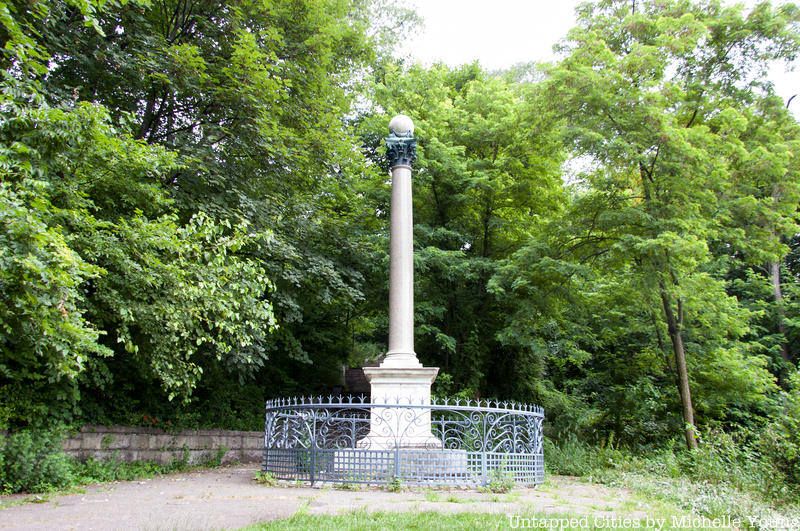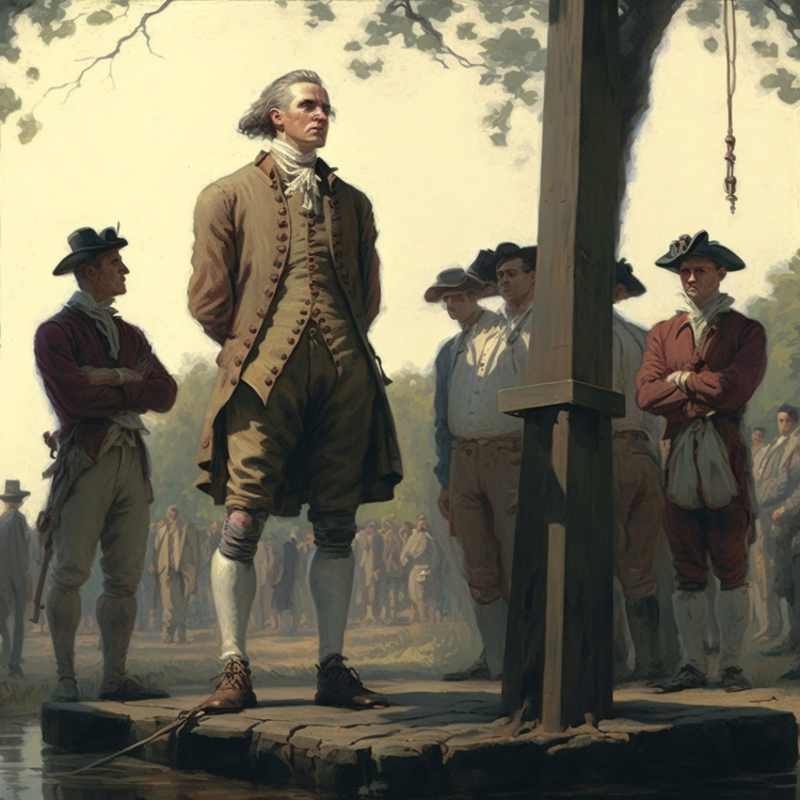2. There are Remnants of the Revolutionary War

At the deadly Battle of Brooklyn (or the Battle of Long Island), the Maryland Regiment led by Major Mordecai Gist, only 400 strong, held out against 2,000 Scottish and Hessians in what is now Park Slope around the Old Stone House. Though the Americans were eventually forced into a panicked retreat across Long Meadow, it allowed George Washington’s Army to cross the East River into Manhattan. When Prospect Park was built, the remains of many soldiers left behind as well as fortifications and pits from the Revolutionary War were discovered.
At the base of Lookout Hill, a Stanford White-designed monument was erected to commemorate the heroic stand of “The Maryland 400.” It was dedicated on the 119th anniversary of the battle in 1895. The Maryland Monument is made up of a 12-foot tall polished granite column topped with a marble orb. It is similar in form to White’s Prison Ship Martyrs Monument in Fort Greene Park. The wrought iron fence was added later.
In addition to the Maryland Monument, there are more spots in the park where traces of the Revolution can be found, from the Donogan Oak Monument (a monument to a felled tree used to block a path into the park) to the Battle Pass Rock which marks one of the former points of entry along the American defense line. Battle Pass was also near the site of the now-lost Valley Grove Tavern run by Hicks Post who affectionately called it his “little snuggery.” It was a popular stop for those en route to Coney Island.
Even the centuries-old trees may hold within them remnants of the Revolution. There has been talk of x-raying the trees in Nethermead to see if there are Revolutionary War bullets embedded inside. Another route with deep history which runs through the park is the path of East Drive which partially follows an old Native American trail which according to Prospect Park: Olmsted and Vaux’s Brooklyn Masterpiece, “branched off a larger path that ran between what is now Atlantic and Flatbush Avenues.”






